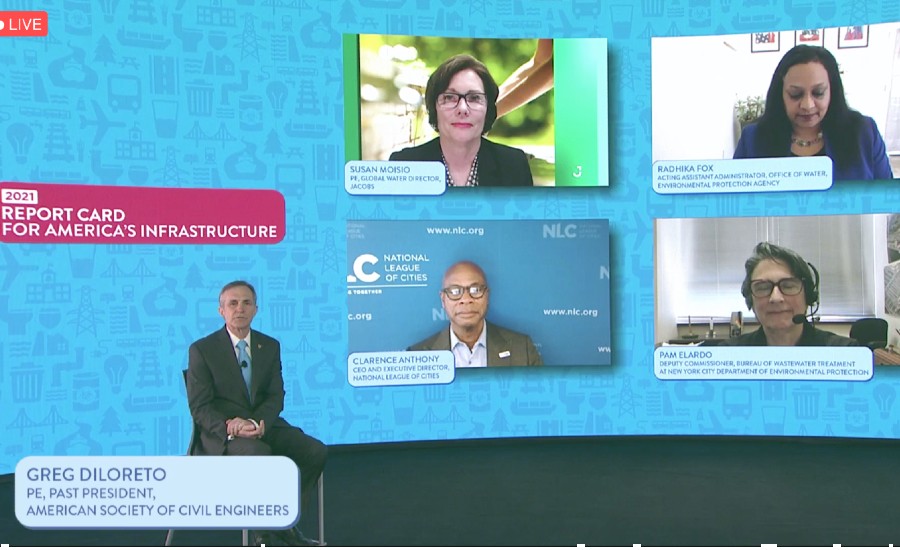The U.S. Environmental Protection Agency is set to announce new grants worth about $60 million for sewer overflow and stormwater reuse municipal projects, said EPA water group official Radhika Fox during an American Society of Civil Engineers panel discussion following the release of its infrastructure report card March 3.
“It’s a drop in the bucket relative to the need of what we have as far as the stormwater challenge,” said Fox, acting assistant administrator at the agency’s Office of Water, “but it is, I think, a step in the right direction.”
The challenges of water management was set against a backdrop of ASCE infrastructure grades that included a D+ for wastewater and a C- for drinking water. In a first, the ASCE looked at stormwater on its own. “Unfortunately, its inaugural grade was a D,” said moderator Greg DiLoreto, former ASCE president.
Panelists discussed 21st century solutions for 21st century problems, including ensuring an increasingly digitized system is protected from hackers, and that needs and processes are considered holistically, specifically through a One Water approach.
“It's thinking in a much more integrated way across a life cycle of the drop,” said Fox of the approach.
Taking a One Water approach leads to “innovation in the digital space,” including “integrated modeling, digital twins, machine learning, artificial intelligence,” said Susan Moisio, Jacobs’ global water director. Challenges to the approach, including cyber security and a trained workforce, need to be addressed, she said.
Responding to the increasing effects of climate change also becomes more crucial, panelists said.
For the future of New York City’s wastewater management, planning includes determining its place in the circular economy, said Pam Elardo, deputy commissioner at the city’s Department of Environmental Protection wastewater treatment bureau. “We can create benefits for heat, we can create benefits for district heating, green energy, biocells production."
She pointed to one of the city’s wastewater treatment plants, Newtown Creek, which converts commercial food waste into biogas as part of a pilot project with National Grid to bring the converted gas to people's homes. “We can take up to 500 tons a day of food, which is literally 25% of the commercial food waste generated in the city.” Expanding that program would give the agency the capacity to take all of the city's commercial waste.
“It’s always to me about financing,” said Clarence Anthony, CEO and executive director of the National League of Cities. One path forward is through green bonds, used to finance projects with a positive environmental impact. As an example, Anthony cited Hampton, Va., which used green bonds to finance a flood control project last year. “These projects are expanding green infrastructure in ways that share the risk between the investor and the city,” and build in mechanisms to measure performance, he said.




Post a comment to this article
Report Abusive Comment